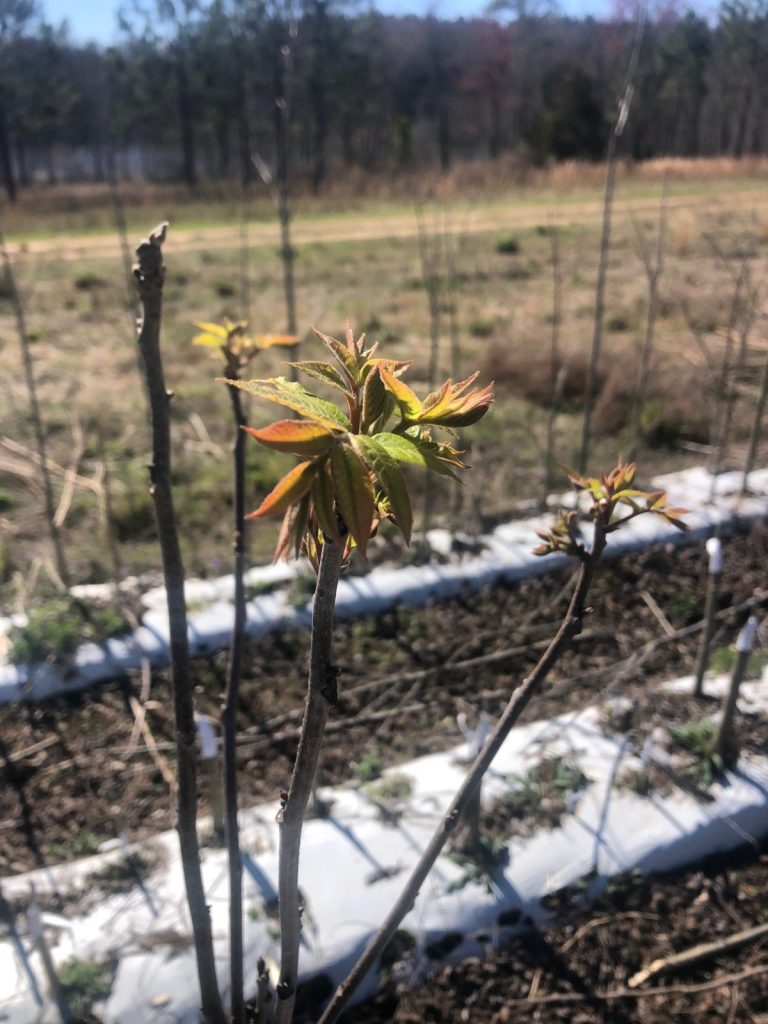As Andrew mentioned in the last blog post, Dr. Barman has been seeing consistent flights of ambrosia beetle for several weeks now. We are starting to get calls about hits on new plantings. Budbreak is looking to be early this year. Reports of early budbreak of many plants throughout the Southeastern U.S. by those who document plant phenology have been coming out lately and most predict spring to arrive 2 weeks early. The Japanese magnolias, redbuds, sawtooth oaks, and red maples around the south Georgia landscape over the last several weeks bear witness to this. Over the past weekend, a nurseryman sent me the following photo of seedling budbreak in the nursery.

Seedlings in the nursery are usually the first pecans to break bud followed by seedling trees in the orchard and grafted trees in the nursery about 2 weeks later. Grafted trees in the orchard are usually the last to break bud and of course, vary by cultivar.
We saw budbreak on early varieties beginning around March 11 last year. I expect things will be no later than that this year. And in case you are wondering, Easter is April 9, so we will likely have a long way to go before being out of danger of a late frost.
In addition to the late frost potential, an early budbreak also means as trees wake up earlier, the window to plant trees is shrinking. Those that are planted from this point forward should receive pyrethroid sprays for Ambrosia beetles soon after planting, especially if planting near woods, or in locations where you have had problems before. The beetles are out and searching for stressed trees as you read this. Trees planted with little time to get roots settled prior to budbreak will be under a great deal of transplant shock and stress. The closer to budbreak you plant, the more likely you are to see them.
